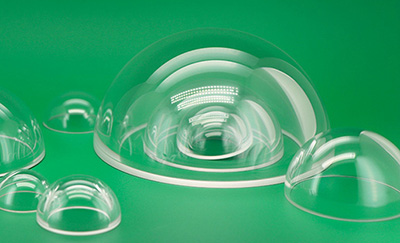Optical Glass Domes: Elevating Camera Performance and Protection
Sep. 09, 2023
Optical glass domes have become indispensable components in modern camera systems, offering protection, enhanced imaging capabilities, and aesthetic appeal. These domes, made from high-quality optical materials, serve as protective covers for cameras in various applications, from underwater photography to surveillance. In this article, we will delve into the world of optical glass domes for cameras, exploring their functions, benefits, and applications.
Understanding Optical Glass Domes
An optical glass dome is a transparent, spherical or hemispherical cover made from optical-grade glass. It is designed to protect the delicate components of a camera while allowing light to pass through with minimal distortion. The use of high-quality optical glass ensures optimal clarity and minimal aberrations, making it an ideal material for applications that demand precise imaging.
Functions and Benefits
1. Protection from Environmental Elements:
One of the primary functions of an optical glass dome is to shield the camera's lens and sensor from external elements. This is particularly crucial in outdoor and harsh environments where dust, water, and debris can damage the camera's components. Optical glass domes are often used in underwater photography, outdoor surveillance systems, and scientific instruments deployed in challenging conditions.
2. Improved Imaging Capabilities:
The shape and optical properties of glass domes can enhance a camera's imaging capabilities. Spherical and hemispherical domes offer minimal distortion and reduced refraction compared to flat covers. This is especially important for underwater photography, where the dome's curvature compensates for the refractive index difference between water and air, resulting in clearer and more accurate images.
3. Reduced Glare and Reflections:
Optical glass domes can be coated with anti-reflective coatings to minimize glare and unwanted reflections. These coatings enhance light transmission, allowing more light to reach the camera's sensor and improving image quality, especially in challenging lighting conditions.
4. Aesthetic Considerations:
In addition to functionality, optical glass domes can contribute to the aesthetic appeal of cameras. Their smooth, transparent surfaces lend a modern and sophisticated look to camera systems. This is particularly relevant in surveillance systems and architectural photography where aesthetics matter.
Custom Optical Domes Fused Silica Optical Glass
Applications of Optical Glass Domes for Cameras
1. Underwater Photography:
Optical glass domes are extensively used in underwater camera housings. The curvature of the dome compensates for the refractive index difference between water and air, resulting in distortion-free underwater images. This is vital for capturing marine life and exploring aquatic environments.
2. Surveillance Systems:
Security and surveillance cameras often require protection from weather conditions, vandalism, and tampering. Optical domes offer a robust solution, ensuring that cameras can capture clear images even in adverse weather.
3. Aerial Photography and Drones:
Drones equipped with cameras benefit from optical glass domes that protect the camera during flight and offer superior imaging capabilities. The domes enhance the drone's ability to capture high-quality images from different altitudes and angles.
4. Scientific and Industrial Imaging:
Cameras used in scientific research, industrial inspection, and remote sensing applications benefit from the protective and optical advantages of optical glass domes. They can be tailored to specific wavelength ranges, making them suitable for various imaging techniques.
5. Entertainment and Broadcasting:
Cameras used in film production, broadcasting, and live events can benefit from optical glass domes that protect the camera while maintaining high-quality image capture. The domes can also be equipped with anti-glare coatings to prevent unwanted reflections from stage lights.
Choosing the Right Optical Glass Dome
When selecting an optical glass dome for a camera system, several factors need to be considered:
- Material Selection: Choose optical glass that offers high transparency, low distortion, and minimal chromatic aberrations to ensure superior imaging quality.
- Curvature: The curvature of the dome should be suitable for the intended application. Spherical and hemispherical shapes are common, with each offering specific advantages.
- Coatings: Anti-reflective coatings enhance light transmission and minimize reflections. Consider the environmental conditions and lighting situations the camera will be subjected to.
- Compatibility: Ensure that the optical glass dome is compatible with the camera system's specifications and mounting mechanisms.
- Durability: Optical glass domes should be made from materials that are resistant to scratching, impact, and environmental stressors.
Conclusion
Optical glass domes play a critical role in camera systems, offering protection, improved imaging capabilities, and aesthetic appeal. Their applications span underwater photography, surveillance, scientific imaging, and more. By choosing the right optical glass dome and tailoring it to the specific needs of the camera system, photographers, filmmakers, and professionals in various industries can elevate their imaging experiences and capture stunning visuals even in challenging environments.
For a range of high-quality optical glass domes and related camera accessories, please contact us: [https://www.clzoptics.com/contact-us/]



















